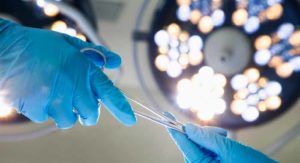SPONSORED BY BOVIE
 Effective procedure lighting is a critical component of a well-functioning medical environment. To see clearly and correctly, the lighting needs to be intense, uniform, and close to white as possible to show the subjects true color. Additionally, a quality light will offer diming and a large enough diameter LED array to provide exceptional shadow control. Your lighting needs to perform all these functions without generating too much heat that can effect tissue and make the surgery team uncomfortable.
Effective procedure lighting is a critical component of a well-functioning medical environment. To see clearly and correctly, the lighting needs to be intense, uniform, and close to white as possible to show the subjects true color. Additionally, a quality light will offer diming and a large enough diameter LED array to provide exceptional shadow control. Your lighting needs to perform all these functions without generating too much heat that can effect tissue and make the surgery team uncomfortable.
The aim of procedure lighting is to better illuminate a procedure area, and give you and your medical staff a greater sense of confidence. With adequate procedure lighting, you can be assured that your vision will be clear, and that you will be better able to avert costly and potentially dangerous medical errors.
Lighting evolution
As technology has evolved so has lighting. Older lighting options consisted of halogen lamps, these lamps typically emitted lower color temperatures, (which is measured in Kelvin°) than the modern LED lights. Many consumers believed that the color temperature is somehow related to the brightness of a lamp.
THIS IS NOT THE CASE. In fact, color temperatures is a measure of the color of a light’s output. LED lights typically emit much higher color temperatures. This affords a much more accurate tissue rendition and does so without color filters, or the other external color correction devices.
Subhead: How to choose
Needs may vary by practice and procedure. If you are considering new lighting, here is a checklist to help you navigate your lighting choice.
- Intensity
- In the world of LED medical lighting, Intensity means Brightness and is measured in LUX or Foot-candles
- Intensity increases and decreases based on the distance from the procedure site. The industry standard distance for measuring intensity is at 1 meter. Beware of companies who measure their light intensity at a shorter distance to increase their LED light intensity
- Color
- The color of the LED light output is measured in degrees KELVIN (K)
- Lower the degree of Kelvin = pink or red hue
- Higher the degree of Kelvin= a blue tint
- All Bovie MI LED lights are 4300°K, which is similar to daylight and offers a pure white light for superior visibility.
- Heat Generation
- LED lighting radiates virtually no heat
- Improving surgeon and patient comfort during procedures
- Shadow Reduction
- A surgeon cannot be working on a patient, moving instruments and inhibited by shadows in the surgical site
- Positioning
- Perfect positioning is important to any doctor and is a great engineering achievement
- Bovie’s MI LED lights offer a 4 ½ foot radius and utilizes a compression spring arm to adjust to the perfect positioning
- Pattern
- Pattern relates to the diameter and focal range at the surgery or procedure site.
Bovie Medical has many cost effective high quality lighting options that will illuminate your needs from: Family Practice, Dermatology, Plastic Surgery, Urgent Care, OB/GYN, Surgery Centers and Small Operating rooms.
For more information please contact your Bovie Sales Representative.